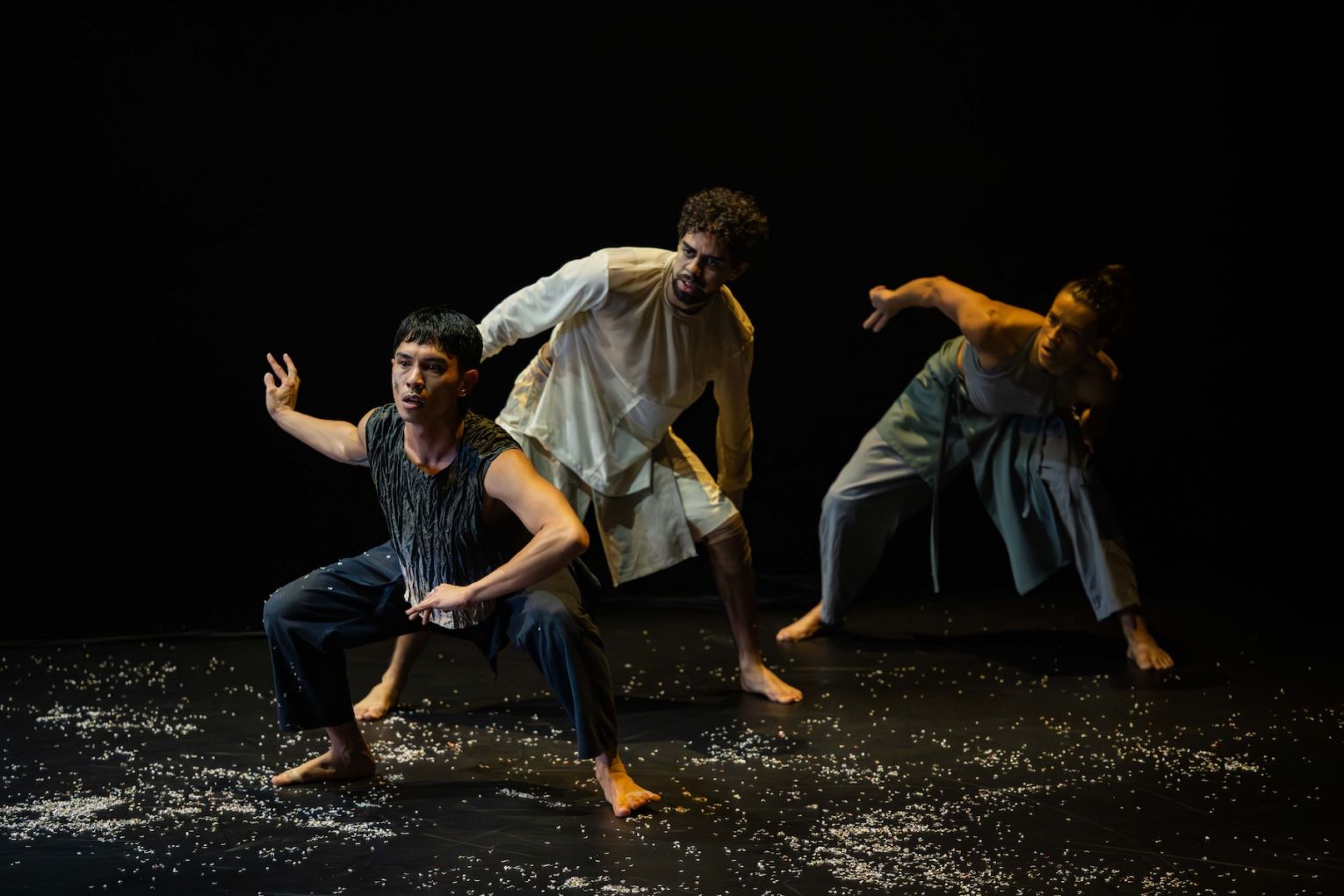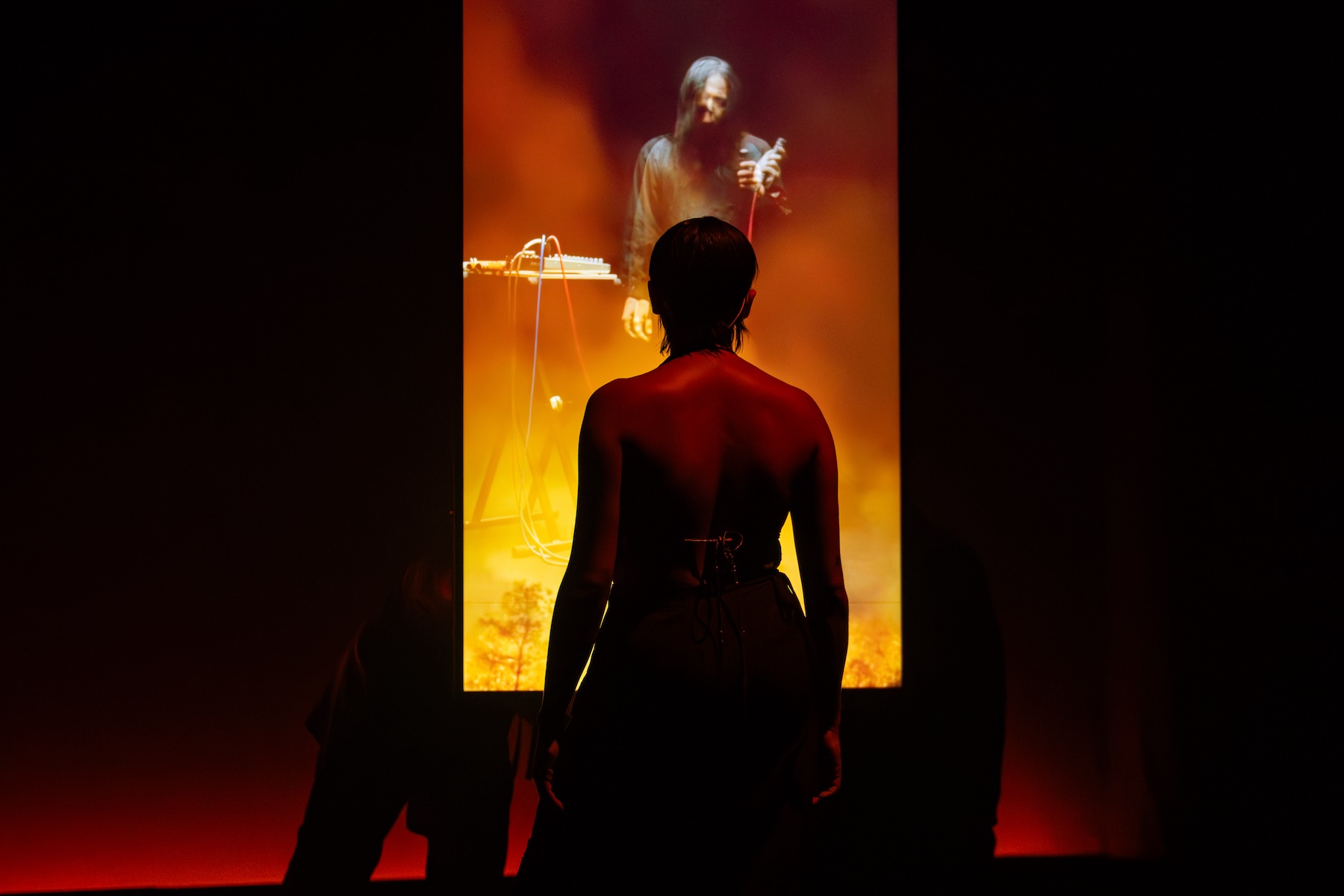
Two Blood is an ode to the centuries-long relationship between Australia’s First Peoples and the migrant communities who, like First Nations people, have endured violence and discrimination under colonial rule. This sweeping historic arc is embodied in a gold rush-era love story set on Tagalaka Country in Northwest Queensland. Its central characters – a Tagalaka woman and Cantonese man whose skeletons are discovered locked in embrace – are based on the ancestry of choreographer and Bangarra Dance Theatre alumnus Jasmin Sheppard, who is co-creator of the work alongside ADT Artistic Director Daniel Riley and playwright and storyteller S. Shakthidharan. Collaboration being a hallmark of ADT’s artistic process under Riley’s direction, Two Blood has also been shaped by the creative input and ancestral stories of the company’s dancers.
Amongst an exceptionally talented group, Karra Nam as the Tagalaka woman is especially mesmerising. She leads Two Blood’s opening chapter with arresting technical control and an intensity of expression that sets the tone for the rest of this heartfelt production.
A strong beginning is mirrored by a memorable final act that sees Nam and Zachary Lopez come together in an achingly tender duet. Picking up a recurring choreographic motif, they reach out to clasp each other by the neck: that vulnerable passage of breath, speech, and pulsing lifeblood. The work’s thematic concerns take it far beyond a simple tale of romance, and the pair are largely separate until this finale. Given how beautifully they move together, I’d have loved to see Nam and Lopez given more space to explore the dynamic between their characters.

You might like
If A Quiet Language (ADT’s excellent contribution to this year’s Adelaide Festival) was a notably vocal work, Two Blood takes a step further in this direction. S. Shakthidharan’s ambitious script encompasses five languages and moves between emotive spoken word passages, fragmented dialogue, susurrating whispers, and onscreen text. While this focus on words highlights the vital role language plays in preserving cultural identity and heritage (and, conversely, the ways it can be manipulated as a tool of colonial suppression), the show loses a little of its momentum and visceral immediacy in some of the more speech-heavy sections.
The music (James Howard and Andy Qilong Chia) and audiovisual design (Elias Nohra) are a highlight of this multidisciplinary production. The work is at its most electrifying when the whole cast are on stage moving with cohesive intensity under fiery orange light, while a pair of roving screens show footage of musicians producing a soundscape of guitar, cello, flute and Chinese zither, mixed with heavy electric beats. The dancers’ breathing and panting is frequently amplified, drawing attention to the bodily toll of performing to survive in a system that refuses to recognise your humanity.
These moments – when we can hear the performers’ exertion, when resonant bass beats shake us in our seats, when we lean forward to see better or strain to catch meaning from an unfamiliar language or poetic diction – are emblematic of a demanding, full-bodied work. This is not a frictionless night-in with Netflix, as Daniel Riley reminded the audience, stepping onstage to speak with us when tech issues delayed the performance: “That’s the beauty of live theatre”.
Two Blood continues at the Odeon Theatre until November 1 as part of OzAsia Festival
Free to share
This article may be shared online or in print under a Creative Commons licence

